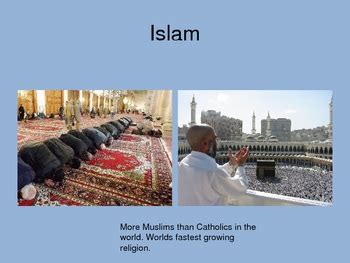Introduction
Islam, one of the world’s largest religions, plays a significant role in shaping the cultural, social, and economic landscapes of many countries. In AP Human Geography, Islam is recognized as a major cultural identifier and a key factor influencing population distribution, land use patterns, and economic development.

Definition
Islam is a monotheistic religion that revolves around the belief in one God, Allah, and the teachings of Prophet Muhammad. It is based on the Five Pillars of Islam:
- Shahada: Declaration of faith
- Salah: Daily prayers
- Zakat: Charity
- Sawm: Fasting during Ramadan
- Hajj: Pilgrimage to Mecca
Geographical Distribution
Islam is widely distributed across the globe, with over 1.8 billion adherents worldwide. It is the dominant religion in the Middle East, North Africa, and Southeast Asia. Significant Muslim populations are also found in Europe, North America, and South America.
Population Distribution and Urbanization
Islam has a profound impact on population distribution. Urban areas with large Muslim populations often have higher population densities due to the concentration of mosques, cultural centers, and businesses catering to the Muslim community. For example, Cairo, Egypt, has a population of over 20 million, with a majority of its residents being Muslim.
Land Use Patterns
Islam shapes land use patterns through mosques, Islamic schools, and other religious institutions. Mosques play a central role in Muslim communities, serving not only as places of worship but also as community centers for social, educational, and cultural activities. The construction of mosques often influences the urban landscape, creating focal points within neighborhoods.
Economic Development
Islam has both positive and negative impacts on economic development. On the one hand, Islamic banking and finance systems have contributed to economic growth in some countries. On the other hand, strict religious laws and practices can sometimes hinder economic progress, particularly in areas of women’s rights and education.
Globalization and Islamophobia
In recent decades, globalization has led to increased migration and cultural exchange, resulting in the spread of Islam to new areas. However, this has also fostered Islamophobia, the fear and prejudice against Muslims. Islamophobia manifests in various forms, such as discrimination, hate crimes, and political rhetoric.
Common Mistakes to Avoid
When studying Islam in AP Human Geography, avoid the following common mistakes:
- Stereotyping: Do not generalize about all Muslims based on limited or biased information.
- Assuming uniformity: Recognize that Islam is a diverse religion with various interpretations and practices.
- Confusing culture with religion: Distinguish between cultural practices associated with Islam and the religious teachings themselves.
How to Approach Islam in AP Human Geography
To effectively analyze Islam in AP Human Geography:
- Understand the Five Pillars: Grasp the fundamental beliefs and practices of Islam.
- Examine geographical distribution: Identify areas with high Muslim populations and explore their characteristics.
- Consider population distribution: Analyze the influence of Islam on population patterns and urbanization.
- Study land use patterns: Examine the role of mosques and other religious institutions in shaping the urban landscape.
- Assess economic impact: Evaluate both the positive and negative effects of Islam on economic development.
- Discuss globalization and Islamophobia: Explore the implications of globalization for the spread of Islam and the challenges of Islamophobia.
FAQs about Islam in AP Human Geography
1. What is the significance of Mecca in Islam?
Mecca is the holiest city in Islam and the destination of the Hajj pilgrimage.
2. How does Islam influence marriage and family life?
Islam promotes strong family values, including arranged marriages and a hierarchical family structure.
3. What are the differences between Sunni and Shia Muslims?
Sunni and Shia are the two main branches of Islam, differing primarily in their interpretation of who should have succeeded Prophet Muhammad as the leader of the Muslim community.
4. How does Islam impact gender roles?
Islam emphasizes gender roles based on traditional interpretations of the Quran and Hadith, with men occupying positions of authority and women having primary domestic roles.
5. What are the challenges facing Muslims in the 21st century?
Muslims face challenges such as discrimination, Islamophobia, and the need to adapt to changing social and economic conditions.
6. How can we promote interfaith understanding?
Promoting interfaith understanding involves educating people about different religions, fostering dialogue, and respecting diverse beliefs.
